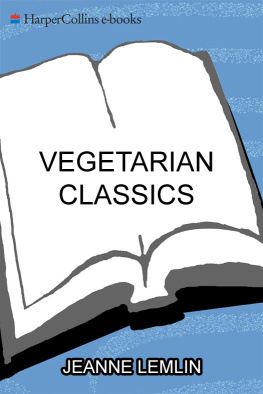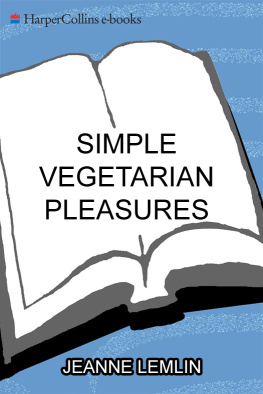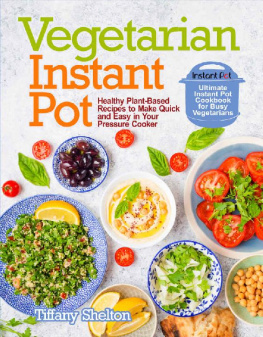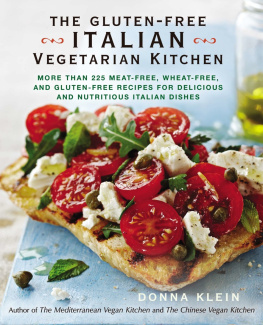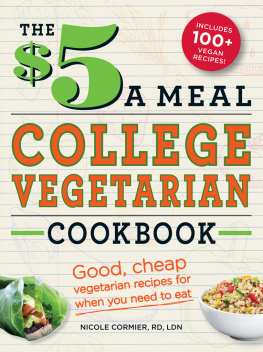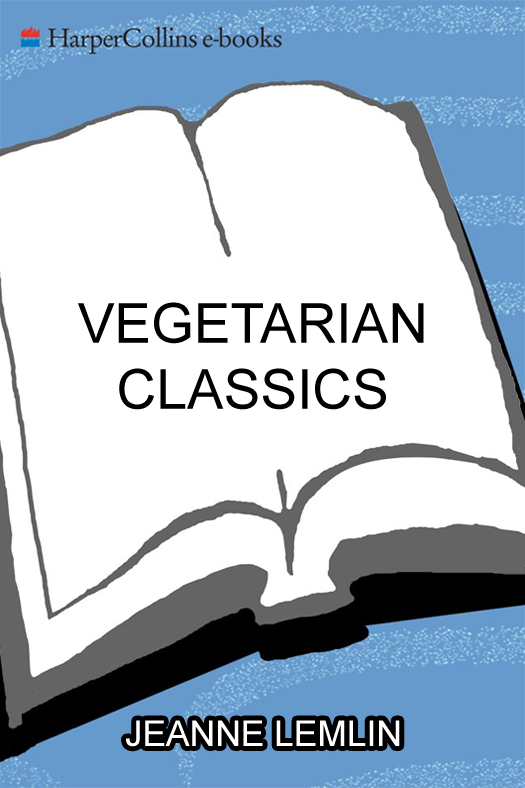Over the past thirty years or so the United States has come of age in the culinary world. Food and cooking have finally established themselves in our culture, and this interest is strengthening. Trends develop almost as fast as seasons change, and we are continuously being enticed by new, exotic ingredients, the charms of different ethnic cuisines, and the promises of increasingly pleasurable dining experiences. This is true of meat-centered as well as vegetarian cooking. For those of us who have chosen a meatless diet, the allure of fresher and more unusual vegetables, grains and beans from far-off lands, and sensational artisan cheeses have shaped modern vegetarian cooking into a serious cuisine that has been embraced by the mainstream.
Yet for all the progress that has been made toward greater culinary sophistication for vegetarian and non-vegetarian cooking, I sometimes find myself yearning for old-time classic dishes. Many of these have become comfort foods for me, and I enjoy alternating more adventurous menus with tried-and-true favorites that have withstood the test of time. A meadess lasagna bolstered by a garlicky marinara sauce, a thick and hearty lentil soup, vegetarian enchiladas that stick to your ribs, and a vegetable pot pie are just a few examples of dishes that have become staples in vegetarian kitchens over the last thirty years.
It is essential to point out that the concept of classics for vegetarians in the United States is not something that would have made much sense twenty-five years ago. Since vegetarian cooking began to take hold in the 1960s, weve needed a few decades for classics to develop. By classics I mean popular meatless dishes that have lingered in the vegetarian repertoire, some of them improvisations of dishes that may originally have included meat.
For example, a mushroom rag (sauce) has become a favorite vegetarian way to make a meatless tomato sauce for pasta, but a traditional Bolognese rag is filled with meat. Vegetarians love to use mushrooms as a meat substitute. Chili is another example of a meat-based dish by definition, but vegetarians have been making meatless bean-laden versions for decades. So were talking about vegetarian classics and not traditional, historically accurate classics that have been in various ethnic cuisines for centuries.
To suit all tastes and moods, and to keep alive traditional favorites that longtime vegetarians, newcomers, and part-time vegetarians will enjoy, here is a collection of old-time classics, updated versions of classics, and a sprinkling of soon-to-be classics that will satisfy adventurous appetites.
A M ATTER OF S TYLE
As with all areas of cooking, the vegetarian approach to meal planning has gone through many transformations over the last few decades. For many years the primary focus had been to include as much protein in the diet as possible to compensate for the absence of meat that was the main source of protein in an omnivorous diet. The result was a cuisine that was nutrient-rich but so heavy and bland that vegetarian food developed a bad reputation it is still trying to shake. Casseroles with soy beans, brown rice, and sunflower seeds might top the charts when nutritionally analyzed, but they wont keep eaters satisfied. In the culinary world when duty is substituted for pleasure, boredom and rebellion set in. The reality behind this preoccupation with protein sufficiency has turned out to be far different from what we had been led to believe. Meat traditionally has been associated with wealth and health, and the prevailing wisdom has long been that the more protein one can ingest, the better. We now know this is untrue. Recent studies have shown that we can get too much protein, and an excess of protein robs the bones of calcium and strains the kidneys.
This discovery can certainly help us relax about vegetarian cooking. My conclusion, after keeping up with all the latest health and scientific studies, is that the best approach to vegetarianism is to eat a wide variety of foods, primarily vegetables, beans, grains, and some dairy products in moderation, and to prepare meals that are truly enjoyable to you and your family. A preoccupation with nutrition is counterproductive because it often leads to fatigue and the eventual abandonment of the diet altogether. Learn what foods are nutritious, include a variety of them, and avoid junk food that is highly processed and filled with additives. If you follow these guidelines, youll have an eating plan that is sound and not overly fussy; in other words, one that is meant for a lifetime, not just a passing phase.
With the heavy burden of nutritional perfection lifted from our shoulders we can create food that is lighter, more spontaneous, and more in keeping with our need for pleasure. Tortellini with Spinach, Garlic, and Smoked Cheese is a far cry from Whole Wheat Spaghetti with Tofu and Tomato Sauce (not in this book, thankfully) because the former dish is not only nutritious but it has been created with flavor as the foremost concern. And that has made all the difference.
A D ASH OF H ISTORY
Vegetarianism has occurred at such an accelerated pace over the last thirty years or so that one could almost conclude that meat-free diets were a phenomenon begun in the 1960s. We know this isnt true, but few people realize how far back the history of vegetarianism extends.
The first solid evidence of flourishing vegetarian communities can be found around 500 B.c. The Jains of India and the followers of Buddha (also in India) and Pythagoras in Greece all concurrently preached nonviolence and vegetarianism.
Around 150 B.c. a sect of Jews known as the Essenes, who were preoccupied with cleanliness because they believed it was an indication of ones inner purity, adopted a vegetarian diet as part of their philosophy. From here on for hundreds of years key historical figures, rather than communities, brought vegetarianism to the forefront. St. Francis of Assisi (born in 1181), Leonardo da Vinci (1452), Percy Bysshe Shelley (1792), Leo Tolstoy (1828), and George Bernard Shaw (1856) were all vegetarians and were vocal about their decisions to shun meat.
In England in the 1700s there were the stirrings of vegetarian movements, but it wasnt until the 1840s that the word vegetarian first appeared. A formal secular vegetarian organization was established, the British Vegetarian Society, and attracted members from all over England. Not long afterward it had branches in various parts of the United Kingdom, and there were other unrelated vegetarian groups.
During this same period about forty British immigrants to the United States, led by pastor William Metcalfe of the Bible Christian
Church, started an American vegetarian society. Sylvester Graham, a health enthusiast known for his creation of the graham cracker, became their most ardent and vocal spokesman. Though not as large a movement as the one taking place in England, the United States did have numerous vegetarian societies in the 1800s and could claim some famous advocates. Bronson Alcott (Louisa May Alcotts father) and Dr. John Harvey Kellogg, a prominent Seventh-Day Adventist and the creator of Kelloggs cornflakes, both championed a meat-free diet and drew many followers.

